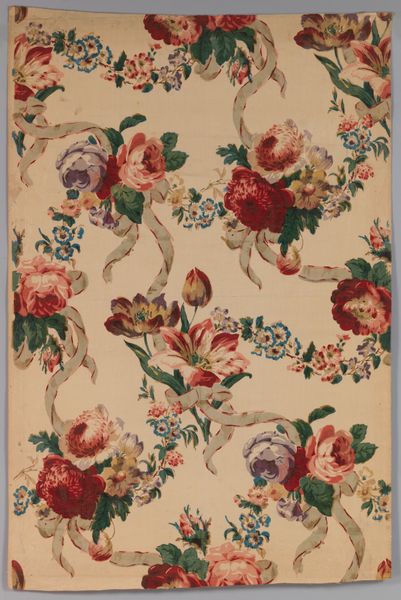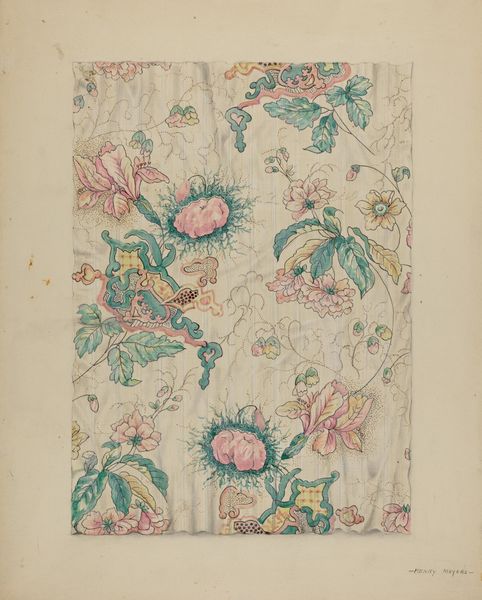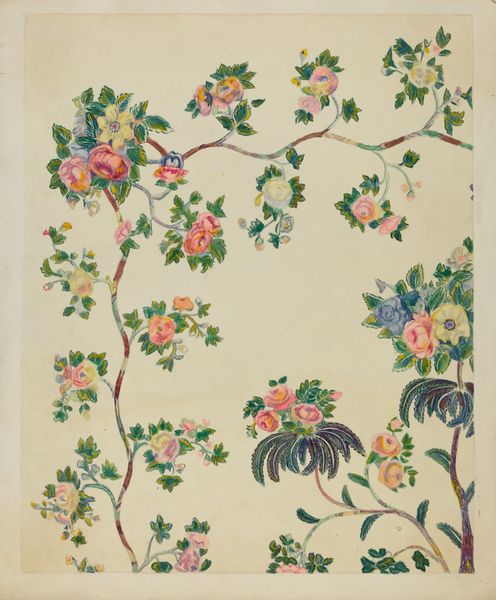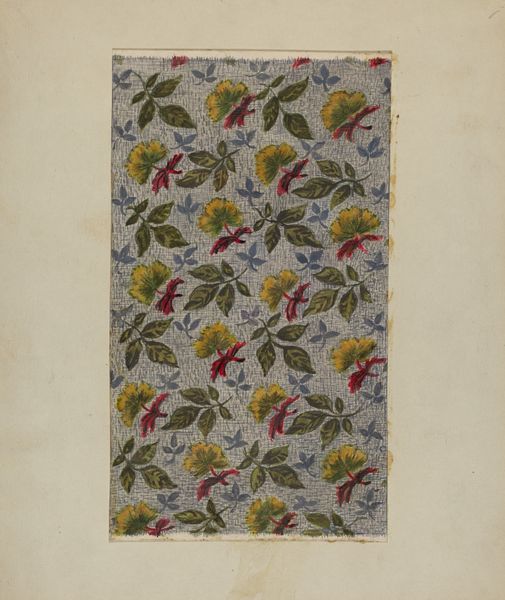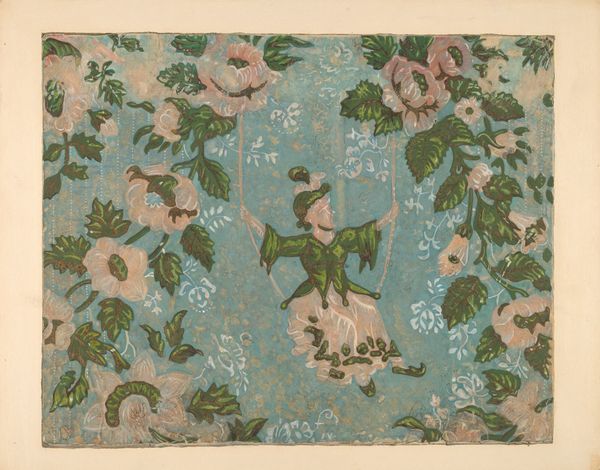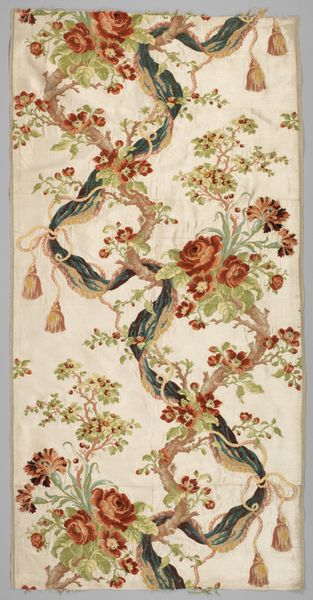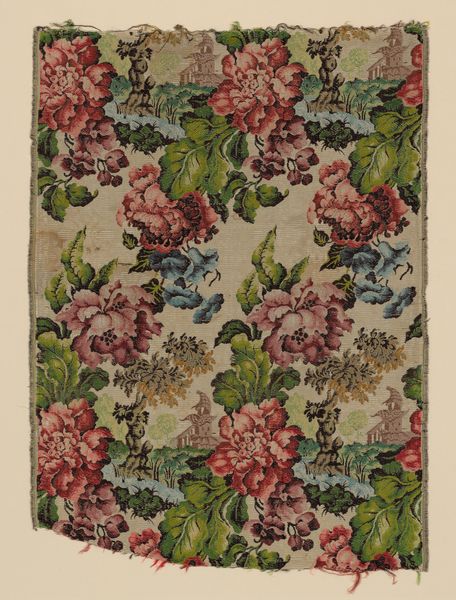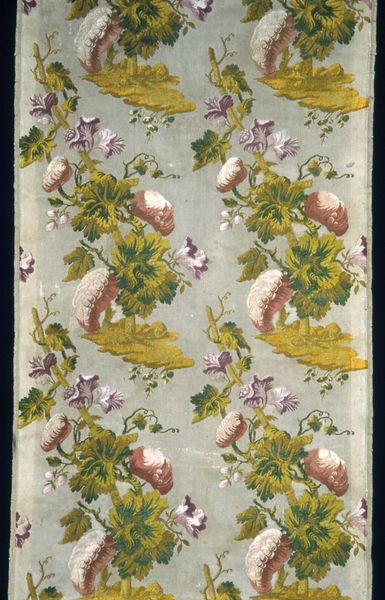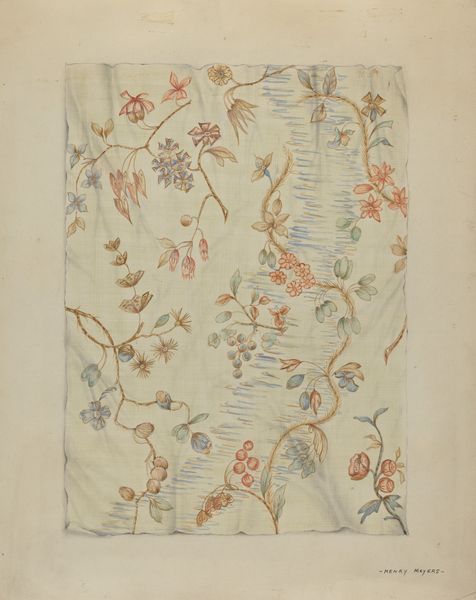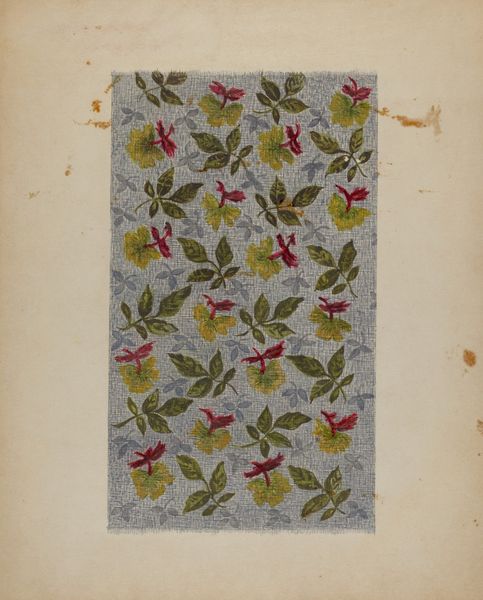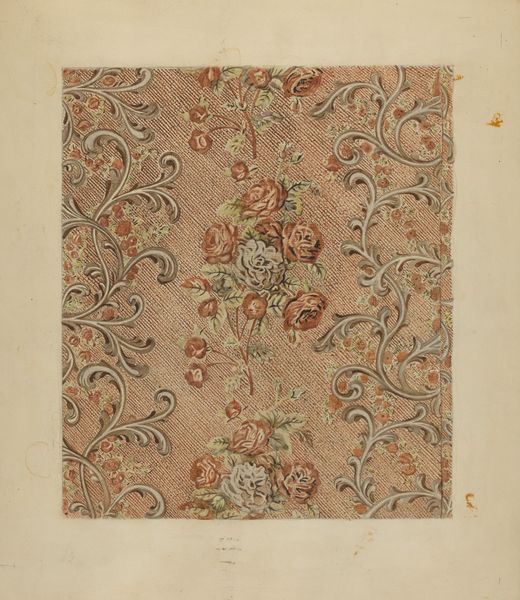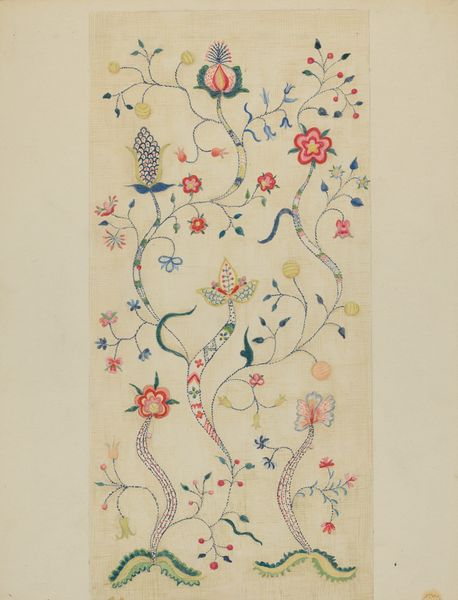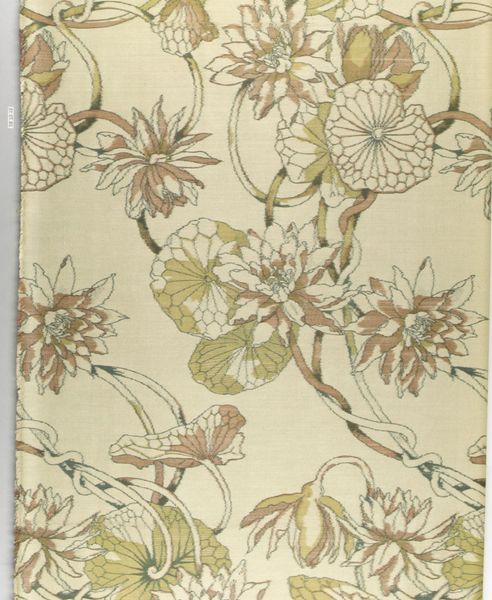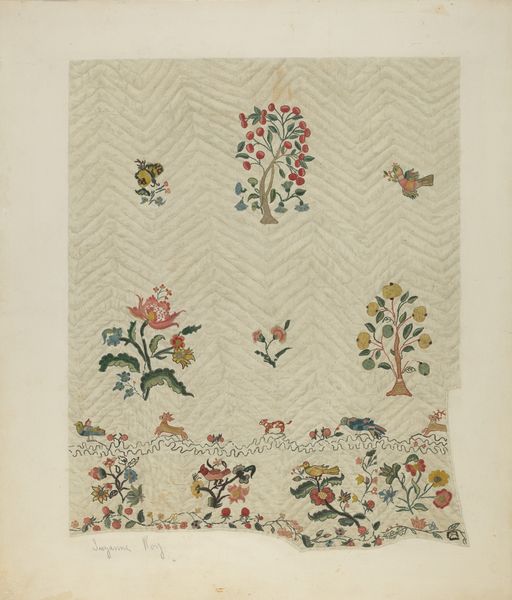
drawing, paper, watercolor
#
drawing
#
water colours
#
paper
#
watercolor
#
decorative-art
#
watercolor
Dimensions: overall: 29.5 x 22.8 cm (11 5/8 x 9 in.) Original IAD Object: 22" repeat
Copyright: National Gallery of Art: CC0 1.0
Curator: This watercolor drawing on paper, simply titled "Wallpaper," comes to us from the hand of Selma Sandler, created sometime between 1935 and 1942. What are your initial thoughts? Editor: It's quite charming! I’m immediately drawn to the muted palette and repeating pattern of fruit and vines. There's a calmness about it, almost a nostalgic echo of a bygone era of domesticity. Curator: It’s intriguing to consider this as a piece intended for mass reproduction, perhaps for the middle class home. Decorative arts like these were a huge reflection of broader societal aspirations at the time. Editor: Exactly! During the interwar years, wallpaper designs reflected social dynamics—they could either promote stability and tradition or lean towards more progressive design concepts. The question is, what was Sandler conveying with this design? Curator: The imagery of grapes and apples suggests themes of abundance and nature's bounty, possibly reflecting the anxieties about food security of the era, right in the middle of the Depression era. I’d be curious to investigate Sandler’s biography to understand her access to education, the level of sophistication that drove this artwork’s composition. Editor: Agreed, contextualizing Sandler's position within the social and artistic constraints placed upon women at that time could open the work to an entirely different critical reading. The repetition of fruits and foliage does establish a feeling of predictable comfort, which can be regarded as quite domestic and feminine. It begs us to ask: whose home would this design actually adorn, and what did it mean for women and homemakers in those contexts? Curator: Right, and how do institutions like this very gallery reinforce certain notions about decoration, art, and who gets to define it? Looking at "Wallpaper," we see not just a decorative design, but a portal into the cultural values and class structures of the period. Editor: A portal indeed. Sandler's "Wallpaper," presented through a contemporary lens, stimulates an important discussion about the intersection of gender, labor, and domestic space at a very precarious historical moment.
Comments
No comments
Be the first to comment and join the conversation on the ultimate creative platform.
